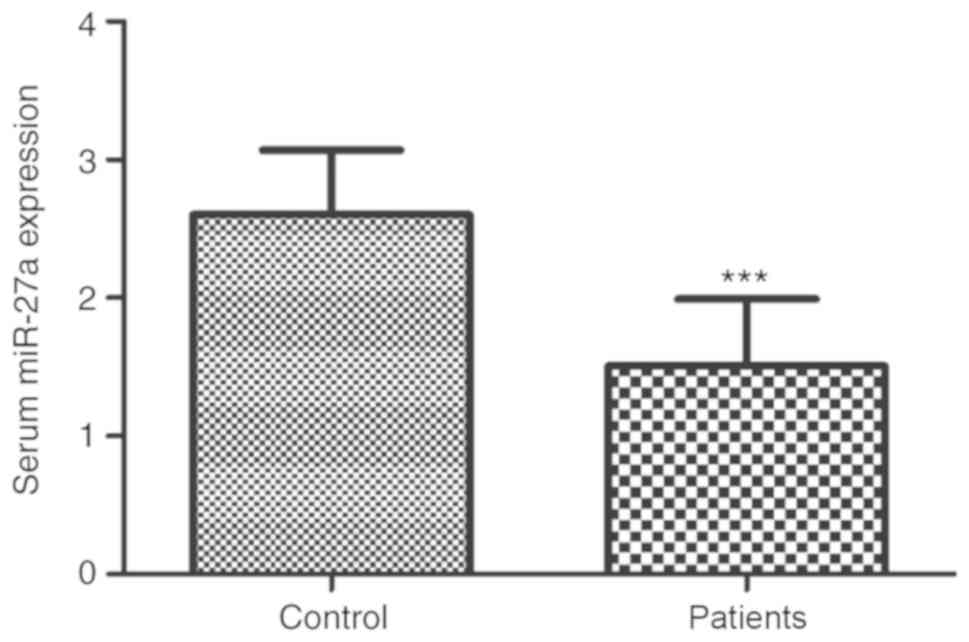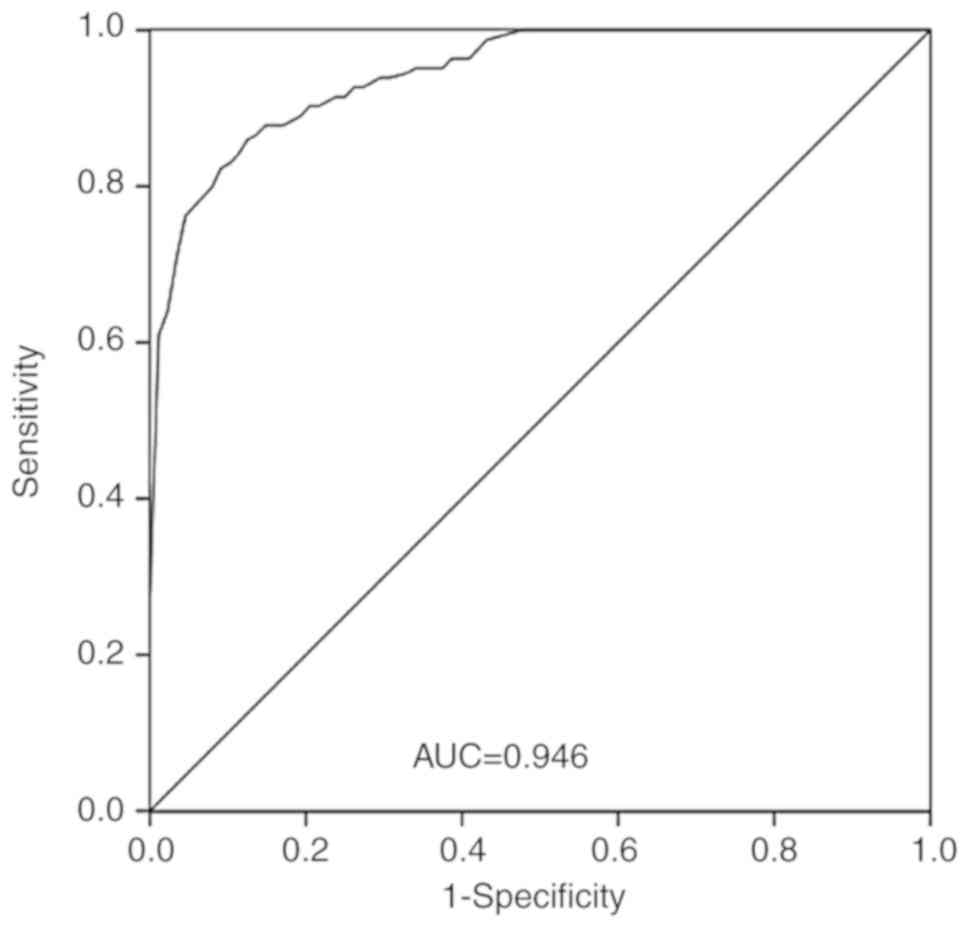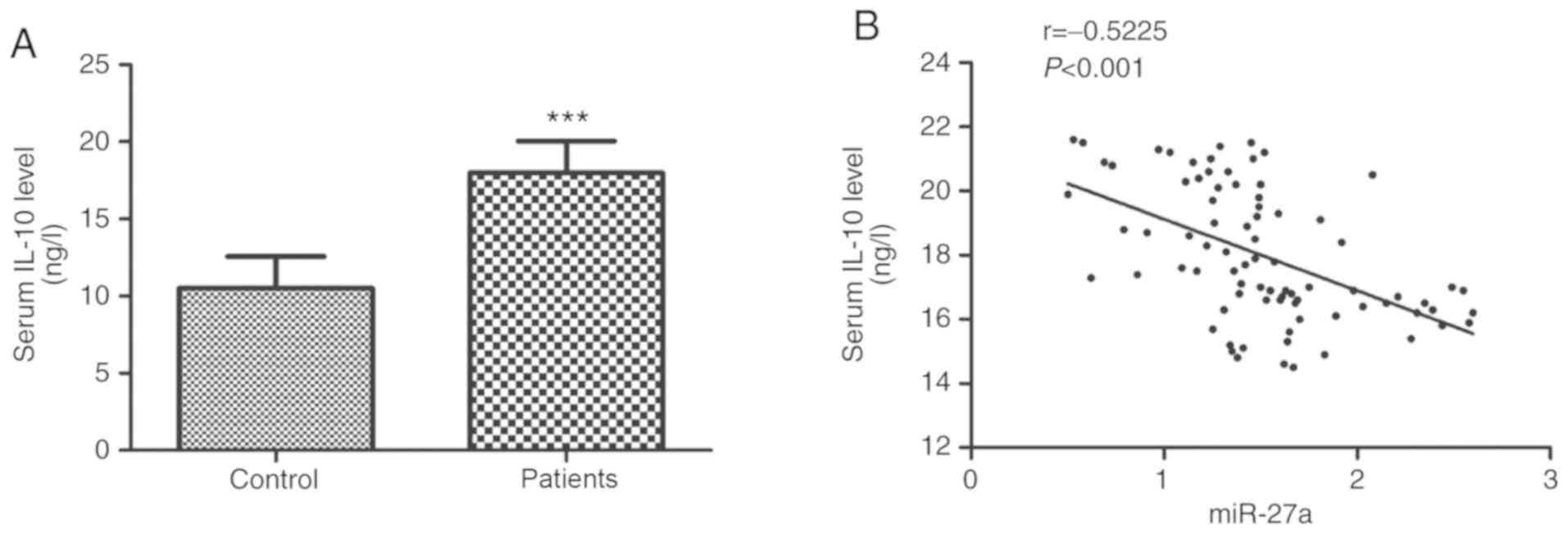|
1
|
Flechel A, Jolivet A, Boukhari R,
Misslin-Tritsch C, Manca MF, Wiel E, Megarbane B and Pousset F:
Paraquat poisoning in Western French Guyana: A public health
problem persisting ten years after its withdrawal from the French
market. Eur Rev Med Pharmacol Sci. 22:7034–7038. 2018.PubMed/NCBI
|
|
2
|
Eddleston M and Phillips MR: Self
poisoning with pesticides. BMJ. 328:42–44. 2004. View Article : Google Scholar : PubMed/NCBI
|
|
3
|
Zyoud SH: Investigating global trends in
paraquat intoxication research from 1962 to 2015 using bibliometric
analysis. Am J Ind Med. 61:462–470. 2018. View Article : Google Scholar : PubMed/NCBI
|
|
4
|
Gil HW, Kang MS, Yang JO, Lee EY and Hong
SY: Association between plasma paraquat level and outcome of
paraquat poisoning in 375 paraquat poisoning patients. Clin Toxicol
(Phila). 46:515–518. 2008. View Article : Google Scholar : PubMed/NCBI
|
|
5
|
Gawarammana IB and Buckley NA: Medical
management of paraquat ingestion. Br J Clin Pharmacol. 72:745–757.
2011. View Article : Google Scholar : PubMed/NCBI
|
|
6
|
Wang W, Li J, Ma G, Li N, Wang P, Xiao Q,
Li B, Liu Y, Gao X and Li W: Effect of rhubarb as the main
composition of sequential treatment in patients with acute paraquat
poisoning: A prospective clinical research. Zhonghua Wei Zhong Bing
Ji Jiu Yi Xue. 27:254–258. 2015.(In Chinese). PubMed/NCBI
|
|
7
|
Maier RV: Pathogenesis of multiple organ
dysfunction syndrome-endotoxin, inflammatory cells, and their
mediators: Cytokines and reactive oxygen species. Surg Infect
(Larchmt). 1:197–205. 2000. View Article : Google Scholar : PubMed/NCBI
|
|
8
|
Kell DB and Pretorius E: To what extent
are the terminal stages of sepsis, septic shock, systemic
inflammatory response syndrome, and multiple organ dysfunction
syndrome actually driven by a prion/amyloid form of fibrin? Semin
Thromb Hemost. 44:224–238. 2018. View Article : Google Scholar : PubMed/NCBI
|
|
9
|
Ramirez M: Multiple organ dysfunction
syndrome. Curr Probl Pediatr Adolesc Health Care. 43:273–277. 2013.
View Article : Google Scholar : PubMed/NCBI
|
|
10
|
Torrecilla J, Del Pozo-Rodriguez A,
Vicente-Pascual M, Solinís MÁ and Rodríguez-Gascón A: Targeting
corneal inflammation by gene therapy: Emerging strategies for
keratitis. Exp Eye Res. 176:130–140. 2018. View Article : Google Scholar : PubMed/NCBI
|
|
11
|
Wu W and Li Y: Lung injury caused by
paraquat poisoning results in increased interleukin-6 and decreased
microRNA-146a levels. Exp Ther Med. 16:406–412. 2018.PubMed/NCBI
|
|
12
|
Tsai TT, Chuang YJ, Lin YS, Wan SW, Chen
CL and Lin CF: An emerging role for the anti-inflammatory cytokine
interleukin-10 in dengue virus infection. J Biomed Sci. 20:402013.
View Article : Google Scholar : PubMed/NCBI
|
|
13
|
He XY, Sun Q, Li ZW, Lu ZQ, Hong GL, Liang
H, Qiu QM and Hu GX: Expression of inflammatory factors in lung
tissue of acute paraquat poisoned rats. Zhonghua Lao Dong Wei Sheng
Zhi Ye Bing Za Zhi. 27:149–152. 2009.(In Chinese). PubMed/NCBI
|
|
14
|
Junbo Z, Yongtao Y, Hongbo L, Fenshuang Z,
Ruyun L and Chun'ai Y: Experimental study of sucralfate
intervention for paraquat poisoning in rats. Environ Toxicol
Pharmacol. 53:57–63. 2017. View Article : Google Scholar : PubMed/NCBI
|
|
15
|
Zheng Y, Ge W, Ma Y, Xie G, Wang W, Han L,
Bian B, Li L and Shen L: miR-155 regulates IL-10-Producing
CD24hiCD27+ B cells and impairs their
function in patients with crohn's disease. Front Immunol.
8:9142017. View Article : Google Scholar : PubMed/NCBI
|
|
16
|
Luo XQ, Shao JB, Xie RD, Zeng L, Li XX,
Qiu SQ, Geng XR, Yang LT, Li LJ, Liu DB, et al: Micro RNA-19a
interferes with IL-10 expression in peripheral dendritic cells of
patients with nasal polyposis. Oncotarget. 8:48915–48921.
2017.PubMed/NCBI
|
|
17
|
Rouas R, Merimi M, Najar M, El Zein N,
Fayyad-Kazan M, Berehab M, Agha D, Bron D, Burny A, Rachidi W, et
al: Human CD8+ CD25+ CD127low
regulatory T cells: microRNA signature and impact on TGF-β and
IL-10 expression. J Cell Physiol. 234:17459–17472. 2019.PubMed/NCBI
|
|
18
|
Xie N, Cui H, Banerjee S, Tan Z, Salomao
R, Fu M, Abraham E, Thannickal VJ and Liu G: miR-27a regulates
inflammatory response of macrophages by targeting IL-10. J Immunol.
193:327–334. 2014. View Article : Google Scholar : PubMed/NCBI
|
|
19
|
Fry DE: Multiple system organ failure.
Surg Clin North Am. 68:107–122. 1988. View Article : Google Scholar : PubMed/NCBI
|
|
20
|
Feng E, Cheng Y, Tan Z and Wang H:
Experience of continuous fluid therapy in successfully rescuing a
patient with acute severe paraquat poisoning. Zhonghua Wei Zhong
Bing Ji Jiu Yi Xue. 31:1043–1044. 2019.(In Chinese). PubMed/NCBI
|
|
21
|
Livak KJ and Schmittgen TD: Analysis of
relative gene expression data using real-time quantitative PCR and
the 2(-Delta Delta C(T)) method. Methods. 25:402–408. 2001.
View Article : Google Scholar : PubMed/NCBI
|
|
22
|
Enright AJ, John B, Gaul U, Tuschl T,
Sander C and Marks DS: MicroRNA targets in Drosophila. Genome Biol.
5:R12003. View Article : Google Scholar : PubMed/NCBI
|
|
23
|
Agarwal V, Bell GW, Nam JW and Bartel DP:
Predicting effective microRNA target sites in mammalian mRNAs.
Elife. 4:2015. View Article : Google Scholar
|
|
24
|
Kertesz M, Iovino N, Unnerstall U, Gaul U
and Segal E: The role of site accessibility in microRNA target
recognition. Nat Genet. 39:1278–1284. 2007. View Article : Google Scholar : PubMed/NCBI
|
|
25
|
Marin RM and Vanicek J: Efficient use of
accessibility in microRNA target prediction. Nucleic Acids Res.
39:19–29. 2011. View Article : Google Scholar : PubMed/NCBI
|
|
26
|
Krek A, Grün D, Poy MN, Wolf R, Rosenberg
L, Epstein EJ, MacMenamin P, da Piedade I, Gunsalus KC, Stoffel M
and Rajewsky N: Combinatorial microRNA target predictions. Nat
Genet. 37:495–500. 2005. View
Article : Google Scholar : PubMed/NCBI
|
|
27
|
Lee H, Lim CW, Hong HP, Ju JW, Jeon YT,
Hwang JW and Park HP: Efficacy of the APACHE II score at ICU
discharge in predicting post-ICU mortality and ICU readmission in
critically ill surgical patients. Anaesth Intensive Care.
43:175–186. 2015. View Article : Google Scholar : PubMed/NCBI
|
|
28
|
Hoo ZH, Candlish J and Teare D: What is an
ROC curve? Emerg Med J. 34:357–359. 2017. View Article : Google Scholar : PubMed/NCBI
|
|
29
|
Wills BK, Aks S, Maloney GE, Rhee J, Brand
R and Sekosan M: The effect of amifostine, a cytoprotective agent,
on paraquat toxicity in mice. J Med Toxicol. 3:1–6. 2007.
View Article : Google Scholar : PubMed/NCBI
|
|
30
|
Zhang L, Li Q, Liu W, Liu Z, Shen H and
Zhao M: Mesenchymal stem cells alleviate acute lung injury and
inflammatory responses induced by paraquat poisoning. Med Sci
Monit. 25:2623–2632. 2019. View Article : Google Scholar : PubMed/NCBI
|
|
31
|
Huang J, Ning N and Zhang W: Effects of
paraquat on IL-6 and TNF-α in macrophages. Exp Ther Med.
17:1783–1789. 2019.PubMed/NCBI
|
|
32
|
Matsui M, Roche L, Soupe-Gilbert ME, Hasan
M, Monchy D and Goarant C: High level of IL-10 expression in the
blood of animal models possibly relates to resistance against
leptospirosis. Cytokine. 96:144–151. 2017. View Article : Google Scholar : PubMed/NCBI
|
|
33
|
Buerfent BC, Gondorf F, Wohlleber D,
Schumak B, Hoerauf A and Hübner MP: Escherichia coli-induced immune
paralysis is not exacerbated during chronic filarial infection.
Immunology. 145:150–160. 2015. View Article : Google Scholar : PubMed/NCBI
|
|
34
|
Sauaia A, Moore FA and Moore EE:
Postinjury inflammation and organ dysfunction. Crit Care Clin.
33:167–191. 2017. View Article : Google Scholar : PubMed/NCBI
|
|
35
|
Huang X, Wang L, Liu W and Li F:
MicroRNA-497-5p inhibits proliferation and invasion of non-small
cell lung cancer by regulating FGF2. Oncol Lett. 17:3425–3431.
2019.PubMed/NCBI
|
|
36
|
Zhang LY, Chen Y, Jia J, Zhu X, He Y and
Wu LM: MiR-27a promotes EMT in ovarian cancer through active
Wnt/β-catenin signalling by targeting FOXO1. Cancer Biomark.
24:31–42. 2019. View Article : Google Scholar : PubMed/NCBI
|
|
37
|
Yang ZQ, Wu CA and Cheng YX: Prognostic
value of microRNA-133a expression and its clinicopathologic
significance in non-small cell lung cancer: A comprehensive study
based on meta-analysis and the TCGA database. Oncol Res Treat.
41:762–768. 2018. View Article : Google Scholar : PubMed/NCBI
|
|
38
|
Jiang M, Wang J, Gu S, Cai N, Liu Y, Zhang
Q, Xu P and He F: Clinical features and prognosis analysis of the
elderly and youth patients with acute severe poisoning. Zhonghua
Wei Zhong Bing Ji Jiu Yi Xue. 30:790–794. 2018.(In Chinese).
PubMed/NCBI
|
|
39
|
Cakir M, Duzova H, Baysal I, Gül CC, Kuşcu
G, Kutluk F, Çakin H, Şeker Ş, İlbeği E, Uslu S, et al: The effect
of hypericum perforatum on kidney ischemia/reperfusion damage. Ren
Fail. 39:385–391. 2017. View Article : Google Scholar : PubMed/NCBI
|
|
40
|
Shebl E and Burns B: Respiratory Failure.
StatPearls; Treasure Island (FL): 2019
|
|
41
|
B'Chir A, Mebazaa A, Losser MR, Romieu M
and Payen D: Intravenous almitrine bismesylate reversibly induces
lactic acidosis and hepatic dysfunction in patients with acute lung
injury. Anesthesiology. 89:823–830. 1998. View Article : Google Scholar : PubMed/NCBI
|
|
42
|
Ju M, Liu B, He H, Gu Z, Liu Y, Su Y, Zhu
D, Cang J and Luo Z: MicroRNA-27a alleviates LPS-induced acute lung
injury in mice via inhibiting inflammation and apoptosis through
modulating TLR4/MyD88/NF-κB pathway. Cell Cycle. 17:2001–2018.
2018. View Article : Google Scholar : PubMed/NCBI
|
|
43
|
Liu L, Qian H, Hu K, Wang L, Zhang Z, Yin
H and He J: miR-27a-3p inhibits pulmonary fibrosis by blocking
Wnt3a/β-catenin pathway in rats. Xi Bao Yu Fen Zi Mian Yi Xue Za
Zhi. 34:1015–1020. 2018.(In Chinese). PubMed/NCBI
|
|
44
|
Aguado-Fraile E, Ramos E, Conde E,
Rodríguez M, Martín-Gómez L, Lietor A, Candela Á, Ponte B, Liaño F
and García-Bermejo ML: A pilot study identifying a set of microRNAs
as precise diagnostic biomarkers of acute kidney injury. PLoS One.
10:e01271752015. View Article : Google Scholar : PubMed/NCBI
|
|
45
|
Huang NC, Hung YM, Lin SL, Wann SR, Hsu
CW, Ger LP, Hung SY, Chung HM and Yeh JH: Further evidence of the
usefulness of Acute Physiology and Chronic Health Evaluation II
scoring system in acute paraquat poisoning. Clin Toxicol (Phila).
44:99–102. 2006. View Article : Google Scholar : PubMed/NCBI
|


















